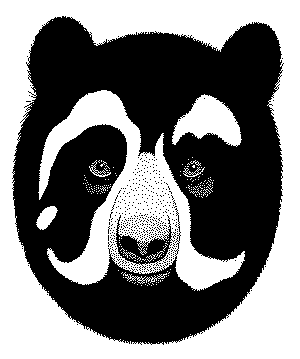 “Wayfarer, there is no path, you make the path as you go.”
“Wayfarer, there is no path, you make the path as you go.”
|
|
| English | Español | Deutsch | Français | Nederlands |
THE COUNTRY
- Why Ecuador?
- Slide Show
THE BOOK
- Foreword
- Preface
- Acknowledgments
- Table of Contents
- Trek Summaries
- Index
- About the Authors
- About the Publisher
A SAMPLE TREK
- Overview
- Route Description
- Topographic Map
- Elevation Profile
HOW TO BUY
THE BOOK
UPDATES
FEEDBACK
LINKS
CONTACT US
- The Authors
- The Publisher
© 2002-07 Kunstaetter
(From Chapter 2, Flora and Fauna)

This species earned its imaginative name because of the white patches usually found around the eyes, while the rest of its coat of thick fur is jet black. The only bear native to South America, it is also the smallest member of family Ursidae. Adult males reach 2 meters (6.5 feet) in length and weigh up to 175 kilograms (385 pounds), while females are usually only two-thirds this size. Widely distributed throughout the Andean countries, Spectacled Bears in Ecuador are found on both the eastern and western slopes of the Andes right up to 4700 meters (15,500 feet), wherever their cloud forest and páramo habitats have not been destroyed by man.
Perhaps because of its relatively small size and mostly vegetarian diet, the Spectacled Bear has traditionally been considered innocuous. It does, however, like to supplement its usual menu of bromeliads (especially achupallas), fruits, and bamboo shoots, with small rodents, rabbits, and even the occasional deer or Mountain Tapir. Although the bears are shy and seldom seen by trekkers, evidence of their activity is easy to spot in the form of chewed or shredded achupallas. In such areas you should not keep food in your tent: this little Latino bear deserves just as much respect as its more intimidating northern cousins.


